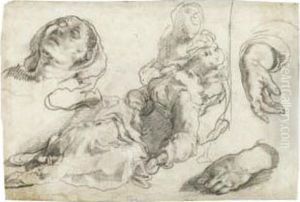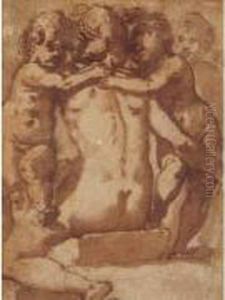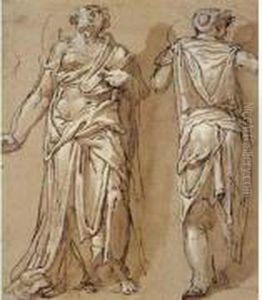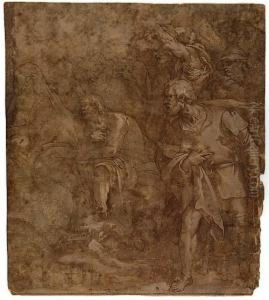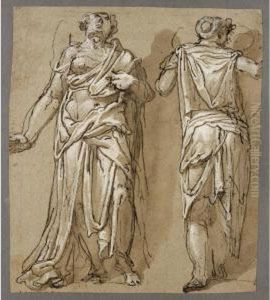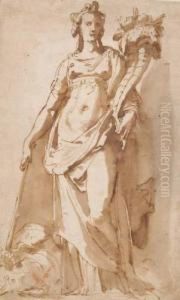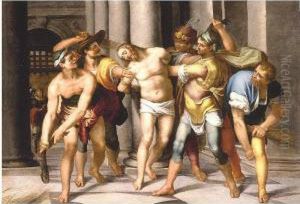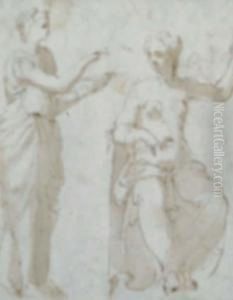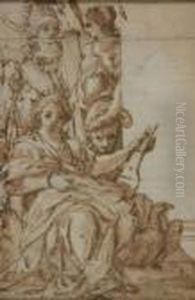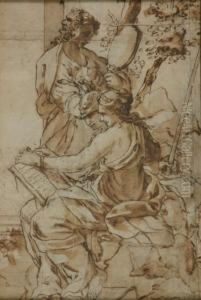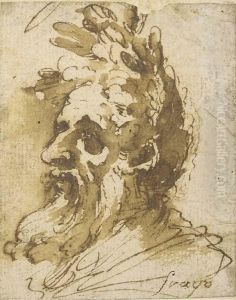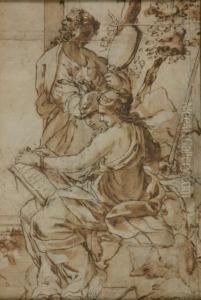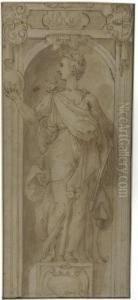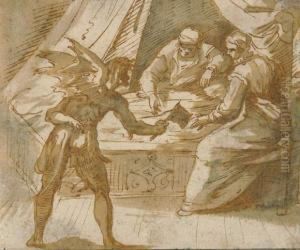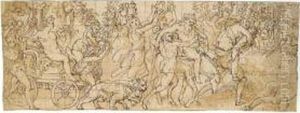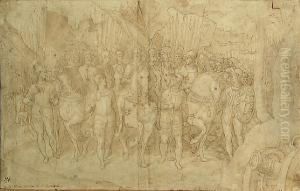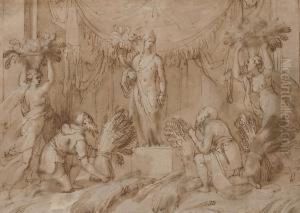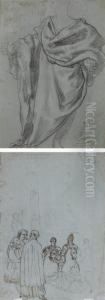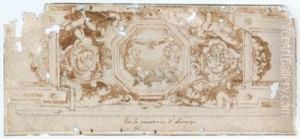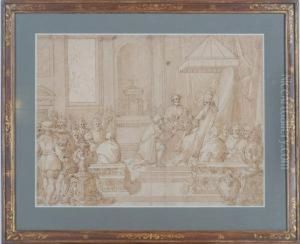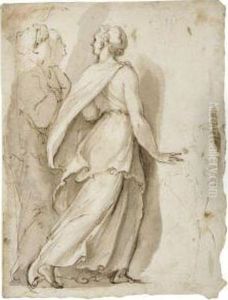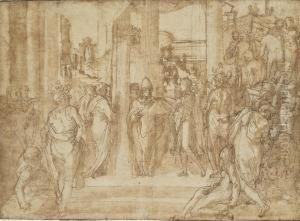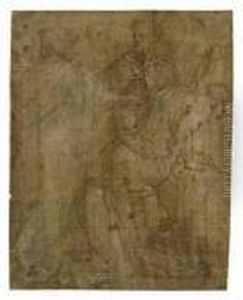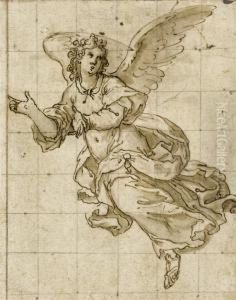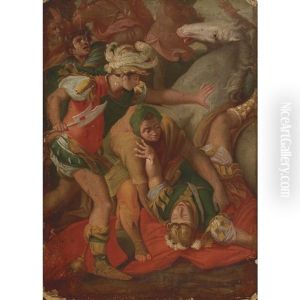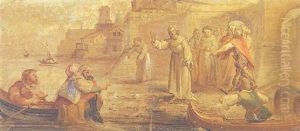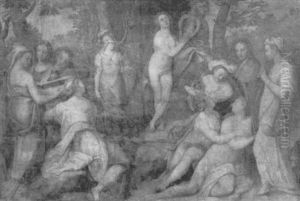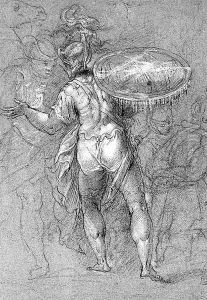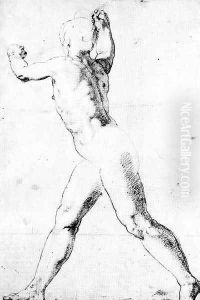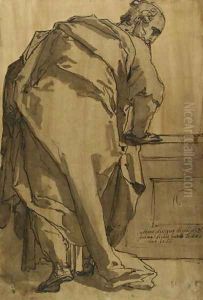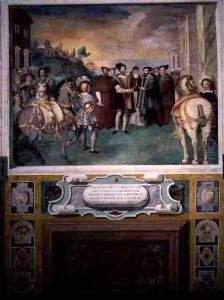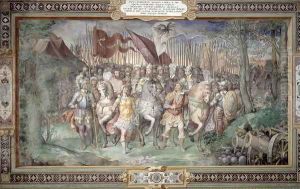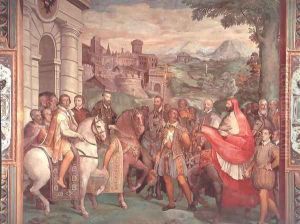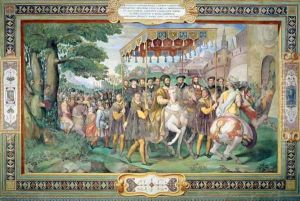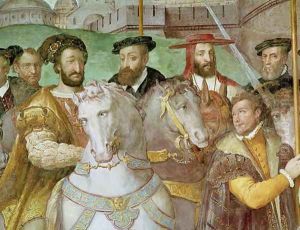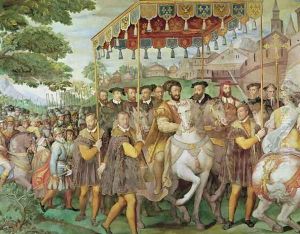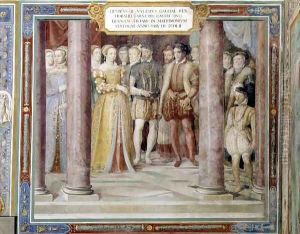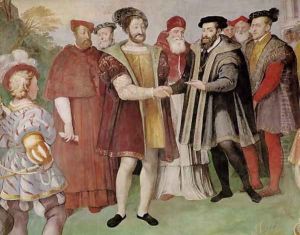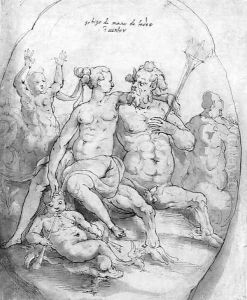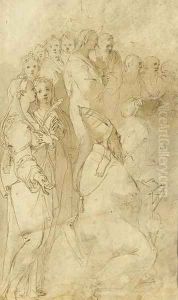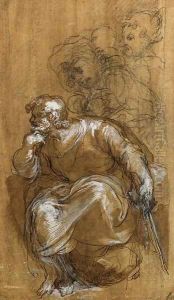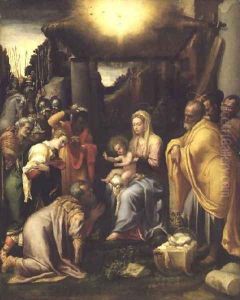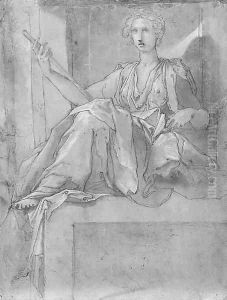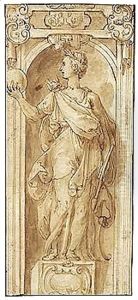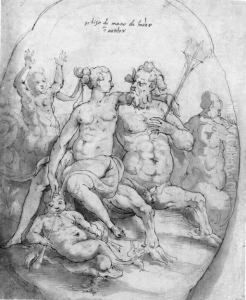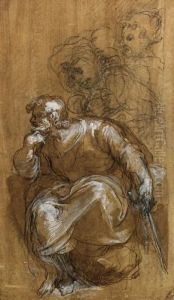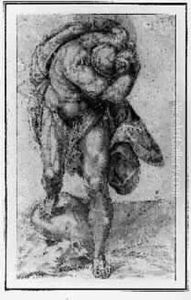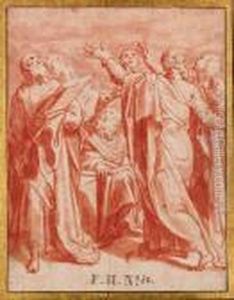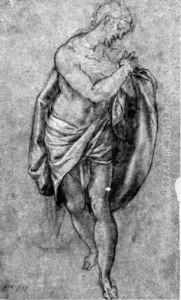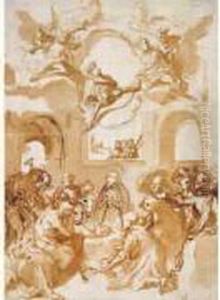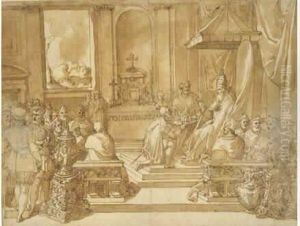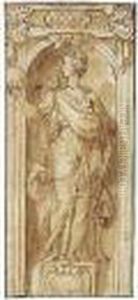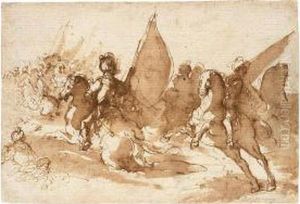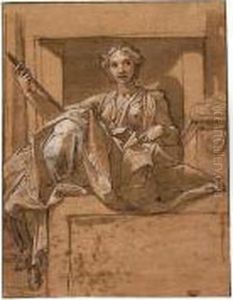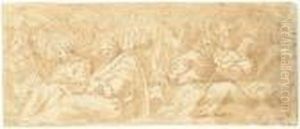Taddeo Zuccaro Paintings
Taddeo Zuccaro, also spelled Taddeo Zuccari, was an influential Italian painter of the Renaissance, born in 1529 in Sant'Angelo in Vado, Duchy of Urbino (now Marche, Italy). He was the elder brother of Federico Zuccaro, who was also a notable painter.
Taddeo's early life was marked by hardship; his family was poor, and he was apprenticed at a very young age. He left his hometown at the age of 14 and traveled to Rome to seek better opportunities. In Rome, Taddeo initially faced many challenges due to his lack of connections and financial support. He worked his way up by assisting various painters and studying the works of Raphael and Michelangelo, whose styles greatly influenced his own.
Zuccaro's talent was recognized, and he was soon commissioned to work on prominent projects. He painted in several significant churches and palaces in Rome, including frescoes in the Vatican, the Capitoline Hill, and the Palazzo Farnese. His works are noted for their Mannerist style, characterized by elegant figures, complexity, and sometimes exaggerated proportions, which was a common artistic approach during the late Renaissance.
One of Taddeo's most famous series of frescoes is the 'Life of St. Paul' in the Cappella Paolina at the Basilica of Santa Maria Maggiore. He also worked on the decoration of the Sala Regia in the Vatican Palace and the Belvedere Courtyard. In addition to religious and mythological scenes, Zuccaro was also known for his portraiture and his ability to depict his subjects with a sense of individuality and character.
Despite his success, Taddeo Zuccaro's life was short-lived. He died at the young age of 37 in 1566 in Rome. After his death, his brother Federico completed some of his unfinished works. Taddeo's legacy lived on through the Taddeo Zuccaro Academy, founded by Federico, which became an important institution for young artists in Rome. Taddeo's work had a lasting impact on the development of Roman Mannerism and influenced many artists who came after him.
